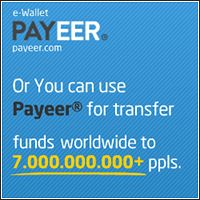The World Bank is praising distributed ledgers and calling out Ripple’s xRapid as a potentially transformational technology.
A new post written by members of the Better Than Cash Alliance and the World Bank’s senior financial sector specialist Marco Nicoli calls traditional business to business remittances “slow and opaque”, requiring intermediaries that often lead to higher costs and slow transfer times. These deficiencies are leaving the door wide open for emerging technologies.
“These shortcomings make the
cross-border payment industry ripe for disruption and innovation. Some
see distributed ledger technologies (DLT) as having the potential to
drive industry-wide change. Indeed, B2B cross-border payments,
traditionally characterized by fragmentation and opacity, are a
potential use case for the successful implementation of DLT…
Using DLT solutions could also bring
down compliance costs and improve the transparency and traceability of
transfers. This could help ease the impact of the de-risking phenomenon
that has affected the remittance services industry over the past few
years. Increasing the transparency of transactions could increase the
confidence of the banking sector in the remittances industry. Further,
DLT solutions could potentially by-pass the de-risking issue altogether,
by enabling remittance service providers to operate without the need
for a correspondent banking relationship.”
“In 2018, Ripple, a fintech company,
piloted xRapid, a DLT-based cross-border payments solution, along the
very competitive U.S.-Mexico corridor. Financial institutions involved
in the pilot saved 40%-70% in foreign exchange costs, and the average
payment times was just over two minutes. The transfer of funds on xRapid
took two to three seconds, with most of the processing time explained
by domestic payment rails and intermediary digital asset exchanges.”
As for whether distributed ledgers will dominate cross-border payments in the long run, the World Bank says that remains an open question.
“Whether DLT will be an effective
solution to the challenges the remittances industry faces , and when the
technology will reach sufficient scale to effectively disrupt this
space, remain to be answered. In any case, there is ample opportunity –
and of course need – for innovation in the cross-border payment
industry.”
Source link: dailyhodl.com









0 Comments